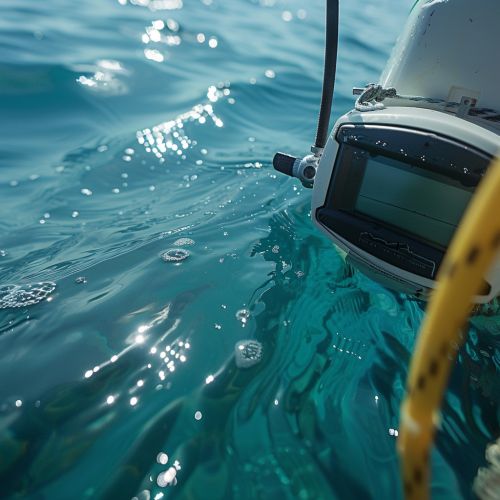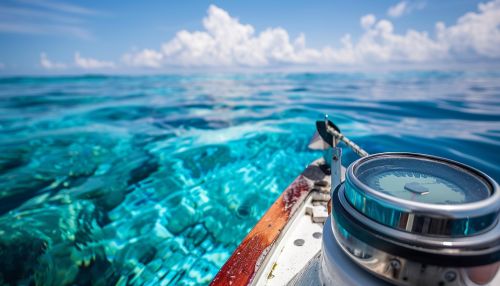Depth sounder
Introduction
A depth sounder, also known as an echo sounder or sonar, is a scientific instrument used to measure the depth of water bodies. It operates by emitting a sound pulse into the water and measuring the time it takes for the echo of the pulse to return, indicating the depth of the water. The technology has been instrumental in nautical navigation, marine biology, and underwater exploration.
History
The concept of using sound to measure distance underwater was first explored in the 19th century. The first practical depth sounder was invented by Reginald A. Fessenden, a Canadian inventor, in 1912. His device, known as the Fathometer, used a series of pings to measure depth. The technology evolved over time, with advancements in electronics and computing enhancing the accuracy and capabilities of depth sounders.


Operating Principle
Depth sounders operate on the principle of sonar (Sound Navigation and Ranging). They emit a sound wave, or ping, into the water. This sound wave travels through the water until it hits an object or the sea floor. The sound wave then bounces back to the sounder, which measures the time it took for the echo to return. This time is then used to calculate the depth of the water, as the speed of sound in water is known.
Types of Depth Sounders
There are two main types of depth sounders: single-beam and multi-beam. Single-beam sounders emit a single sound wave directly beneath the vessel, providing a single depth measurement. Multi-beam sounders emit multiple sound waves at different angles, providing a more comprehensive view of the seafloor.
Applications
Depth sounders have a wide range of applications. They are used in navigation to prevent ships from running aground. They are also used in marine biology to study the ocean floor and the distribution of marine life. In addition, they are used in underwater exploration and archaeology to locate sunken ships and other underwater objects.
Limitations and Challenges
While depth sounders are highly useful, they also have limitations. For example, they can only measure depth in relatively calm water, as waves can distort the sound waves. They also cannot differentiate between different types of materials, such as rock or sand, on the seafloor.
Future Developments
Advancements in technology are continually improving the capabilities of depth sounders. Future developments may include higher resolution imaging, the ability to differentiate between different types of seafloor materials, and improved capabilities in rough water conditions.
